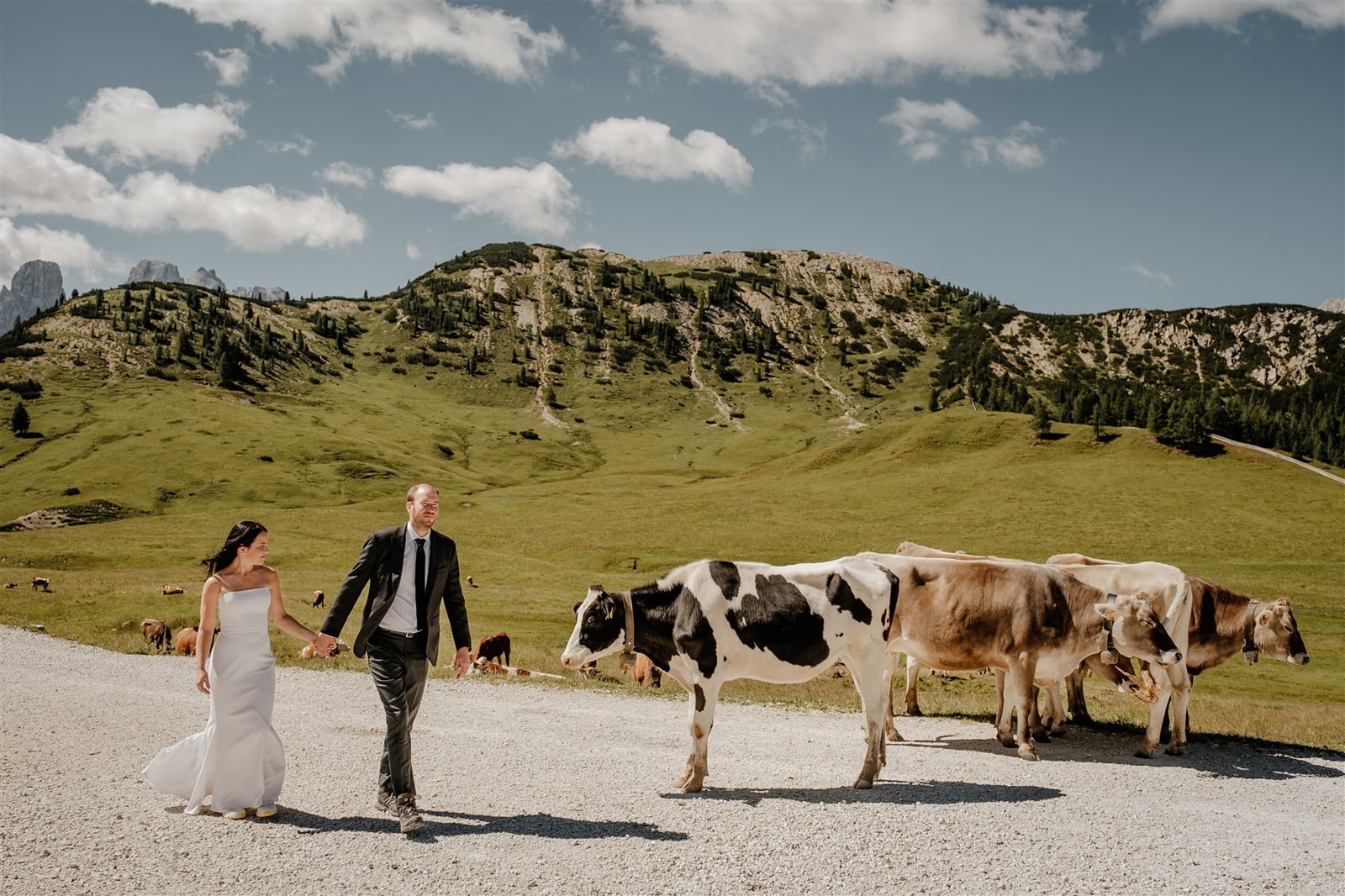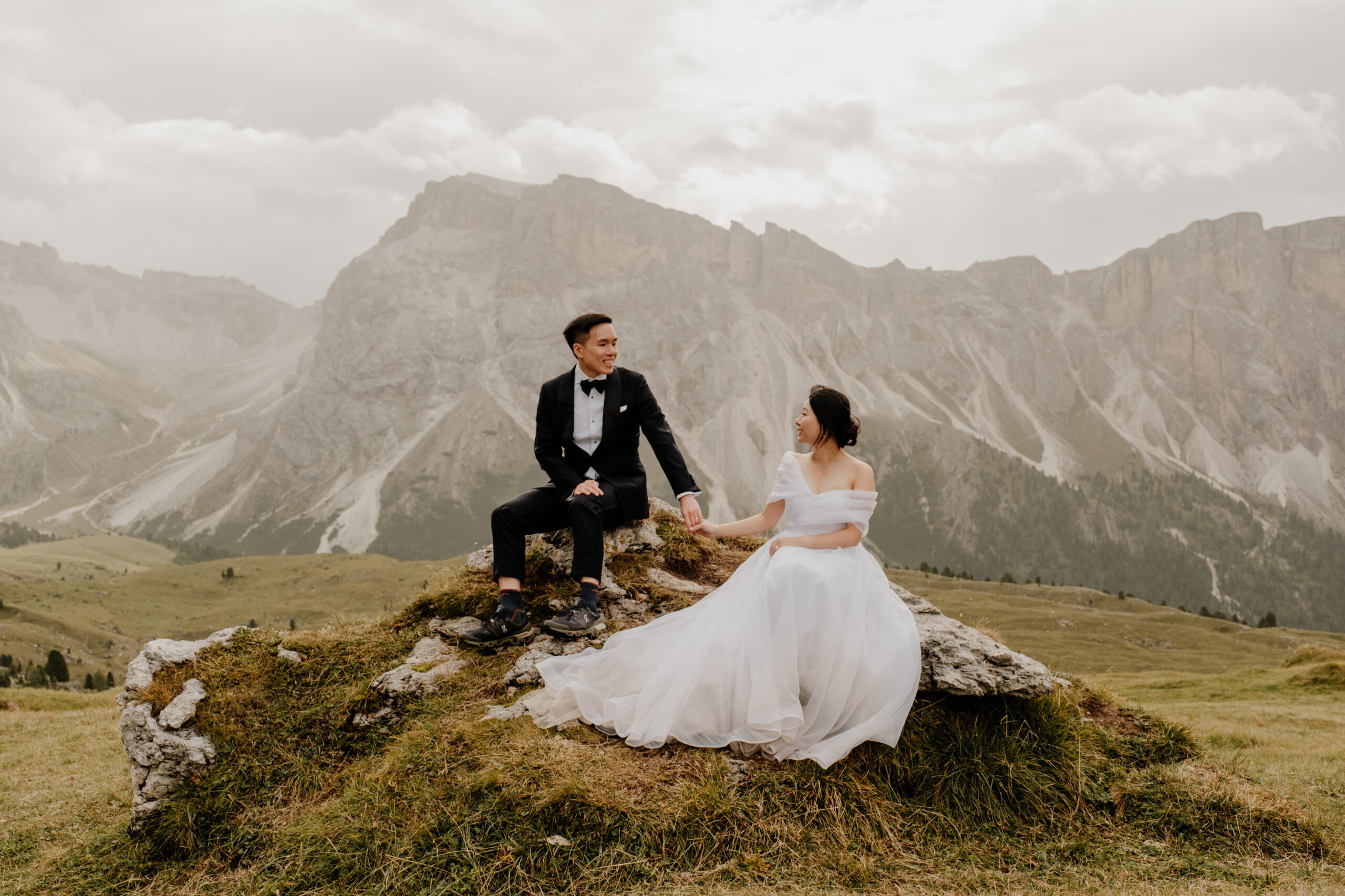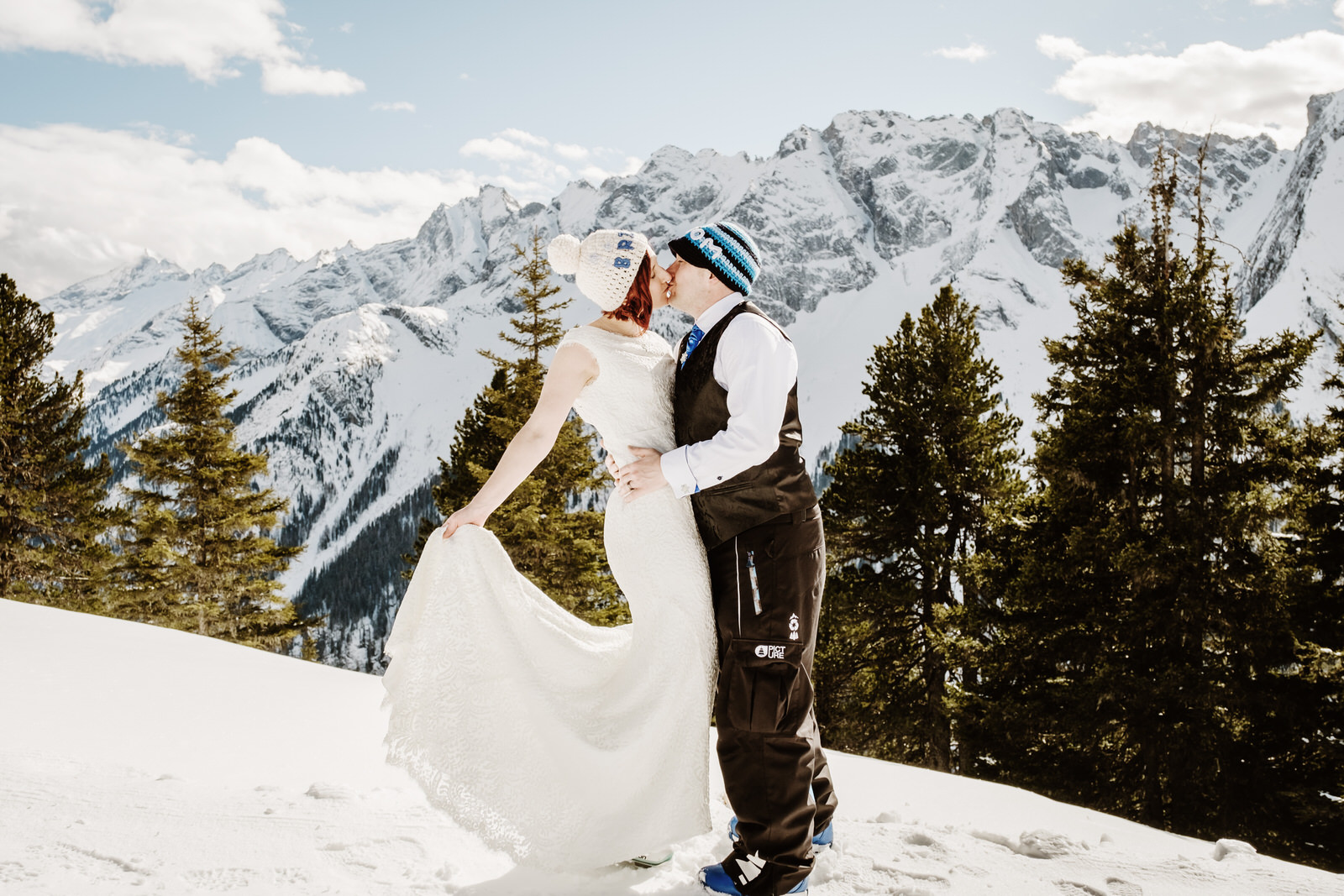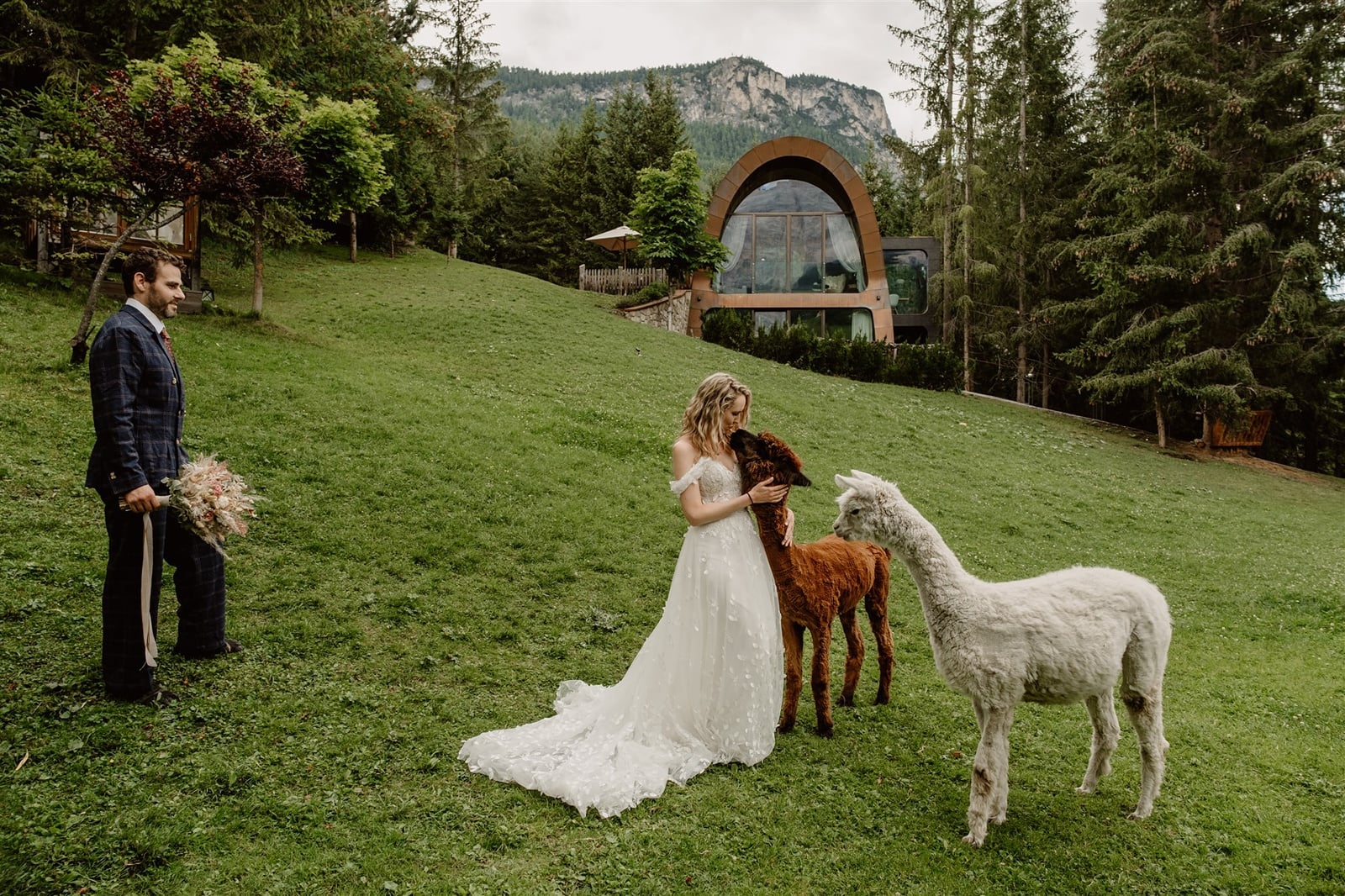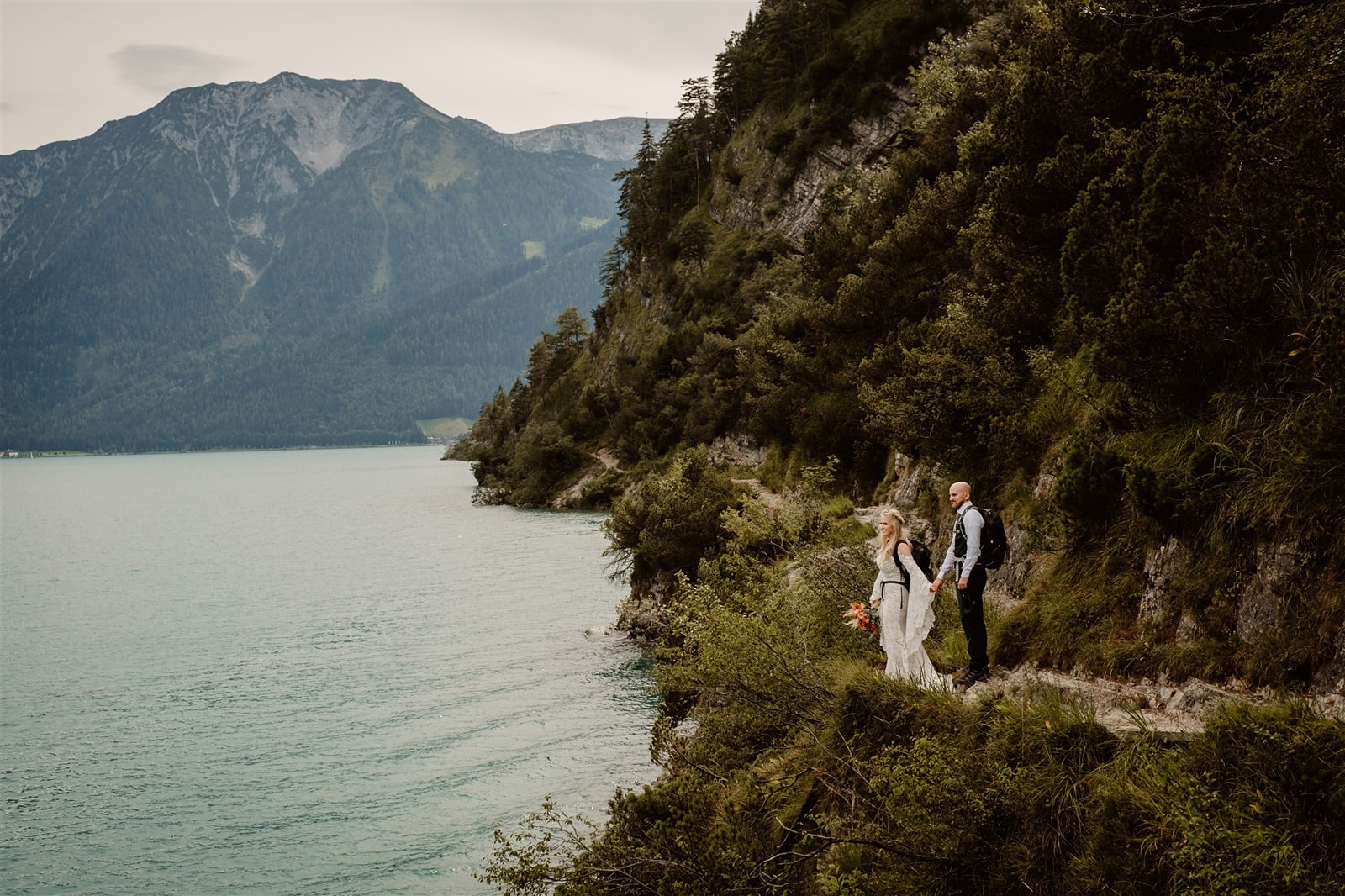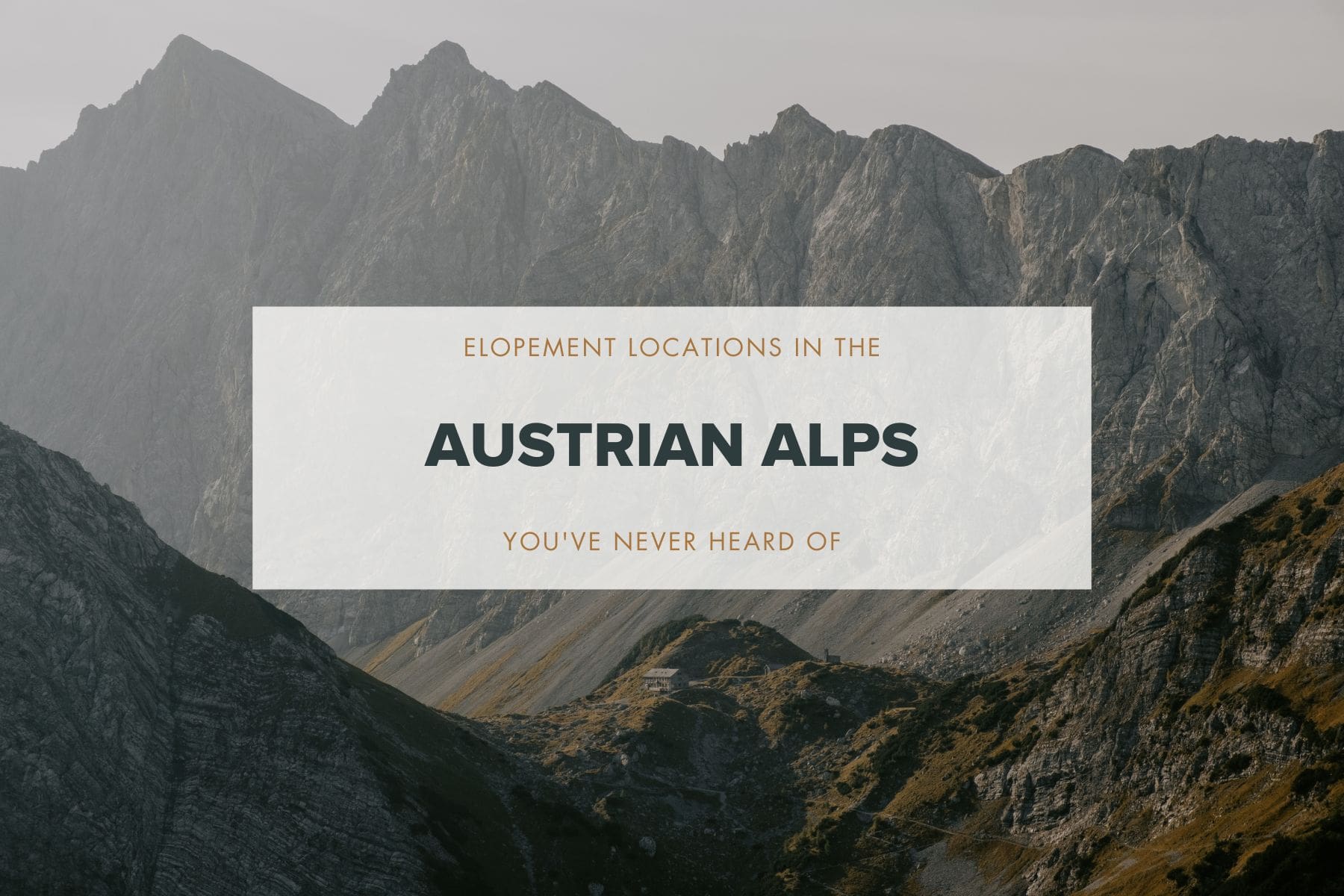Safely Hiking Around Grazing Cattle in the Alps and Dolomites
Disclaimer - Some posts on this website contain affiliate links. I may earn a small commission at no extra cost to you if you make a purchase using my links, which I'll almost certainly use to buy more skis and climbing gear.
The picturesque landscapes of the Alps and Dolomites have long captivated the hearts of hikers and nature enthusiasts. Amidst the breathtaking panoramas, you can encounter a unique aspect of Alpine charm – grazing cattle peacefully coexisting with humans. This tradition of free-roaming cows grazing in alpine pastures is deeply rooted in the region’s cultural heritage, and it offers a truly magical experience for those who venture into these pristine terrains.
As a local hiking guide living and working in Tirol and the Dolomites, I’ve seen a number of photos and videos with grazing cattle arising on social media, and I’ve realised that many people are not aware of how to act when you are around grazing cattle in the mountains.
I’ll also admit that in my earlier years as a photographer, especially before I became a certified guide, that I made mistakes. I was unaware of how to act around grazing cows, and sometimes acted in ways that weren’t responsible in order to get a cool photo.
In this guide, we’ll explore the art of hiking safely around grazing cattle, emphasizing the importance of respect and caution to ensure both our well-being and that of these beautiful animals.
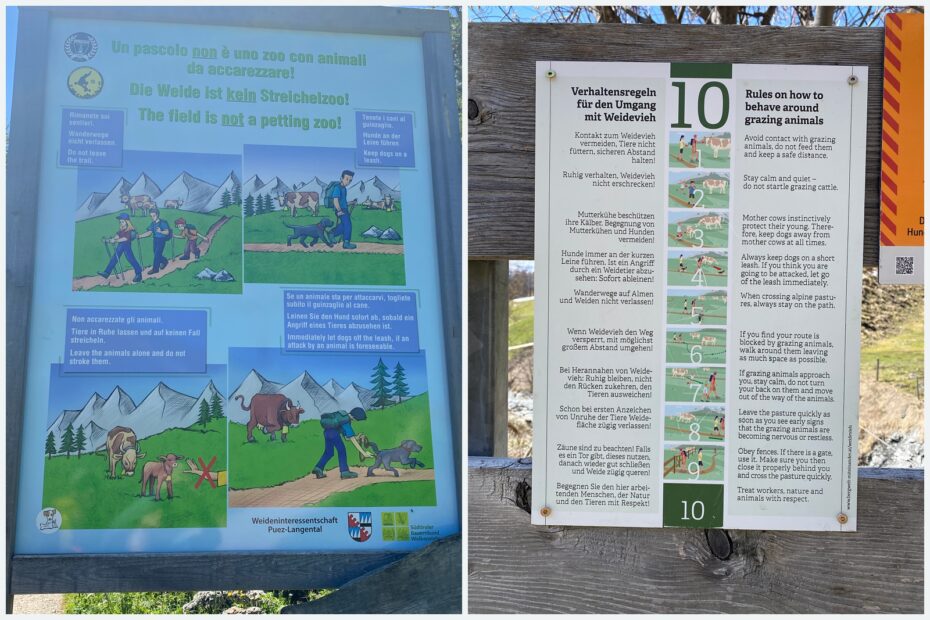
Understanding Alpine Pastures and Grazing Cattle
The tradition of free-roaming cows grazing in the Alpine meadows can be traced back centuries and is deeply rooted in the region’s cultural heritage. During the warm summer months, local farmers have historically practiced a method known as “transhumance.” This involves moving their livestock, including cows, up to higher elevations in the mountains to take advantage of the abundant alpine pastures. The cows graze on these nutrient-rich meadows, providing them with a diverse and healthy diet, which in turn enhances the quality of the milk and dairy products they produce.
This tradition not only ensures the well-being of the cattle but also helps preserve the delicate Alpine ecosystem. Grazing cows play a vital role in maintaining the biodiversity of the meadows, as their feeding habits promote the growth of diverse plant species. Additionally, their movements across the landscape help disperse seeds, contributing to the reseeding of the flora.
As a result of this longstanding practice, hikers in the Alps have grown accustomed to sharing the trails with these gentle giants. The cows are accustomed to human presence, and while they may display a curiosity towards hikers, they are generally docile and uninterested in confrontations. Nonetheless, respecting their space and acting responsibly around them is crucial to ensure a safe and enjoyable experience for everyone.
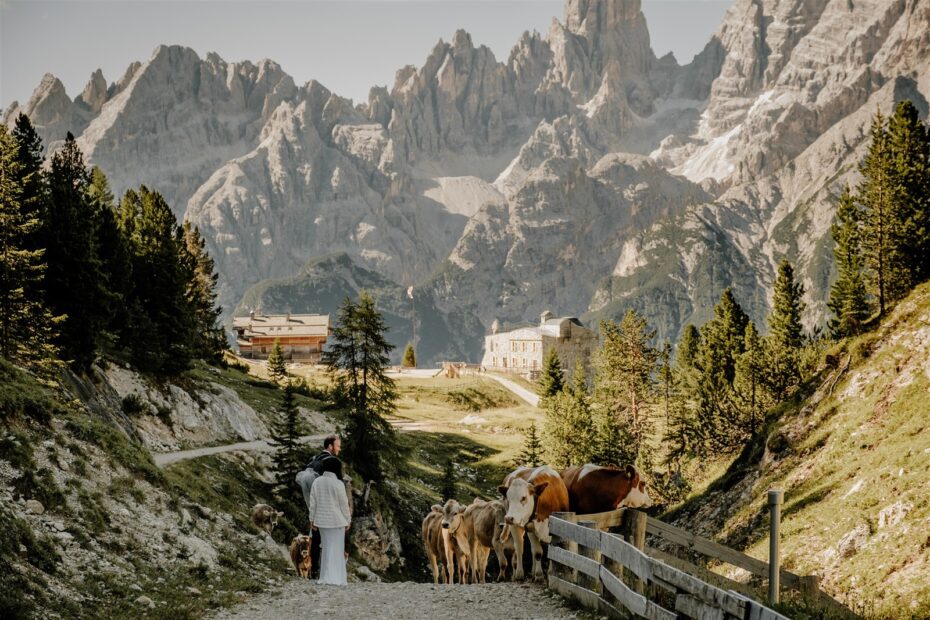
Planning Your Hike in the Alps and Dolomites
Before setting off on your alpine adventure, it’s essential to plan your hike carefully. Research the hiking trails in the Alps and Dolomites, considering their difficulty level, distance, and the likelihood of encountering grazing cattle. Make use of local hiking guides, official park websites, and online resources to gather valuable information about the trails and the presence of cattle. Respecting the rules and regulations of these UNESCO World Heritage Sites is vital to ensure responsible hiking and protect the delicate ecosystem.
How To Behave Around Grazing Cattle
Safe hiking through cattle grazing pastures requires a combination of awareness, respect, and understanding. Here are the key points to keep in mind:
Maintain a Safe Distance
When sharing the trail with grazing cattle, always maintain a safe distance. Keeping at least 50 meters away from the cows allows them to feel comfortable and minimizes the risk of confrontations. Mother cows can be especially protective of their calves. Give mothers and their babies more space and avoid getting between them, as this may trigger defensive behavior from the mother cows.
If grazing cows approach you, stay calm and quiet. Move away calmly but quickly, and without turning your back to them. Do not try to stroke or touch them.
Do Not Feed Them
Feeding grazing cattle can lead to dependency on human food, disrupt their natural diet, and promote unwanted aggressive behaviour.
Stay Calm and Move Slowly
Staying calm and confident during cattle encounters is essential. Keep in mind that cows are generally docile and uninterested in confrontations with hikers. Sudden movements or loud noises can startle the cattle. Maintain a calm demeanour and move slowly and steadily through the pasture. If the animals are getting nervous or restless, leave the area as quickly as possible.
Whilst it’s recommended to move slowly across alpine pastures, don’t linger there too long. Especially if you notice animals becoming nervous or restless, make sure you leave as quickly as possible.
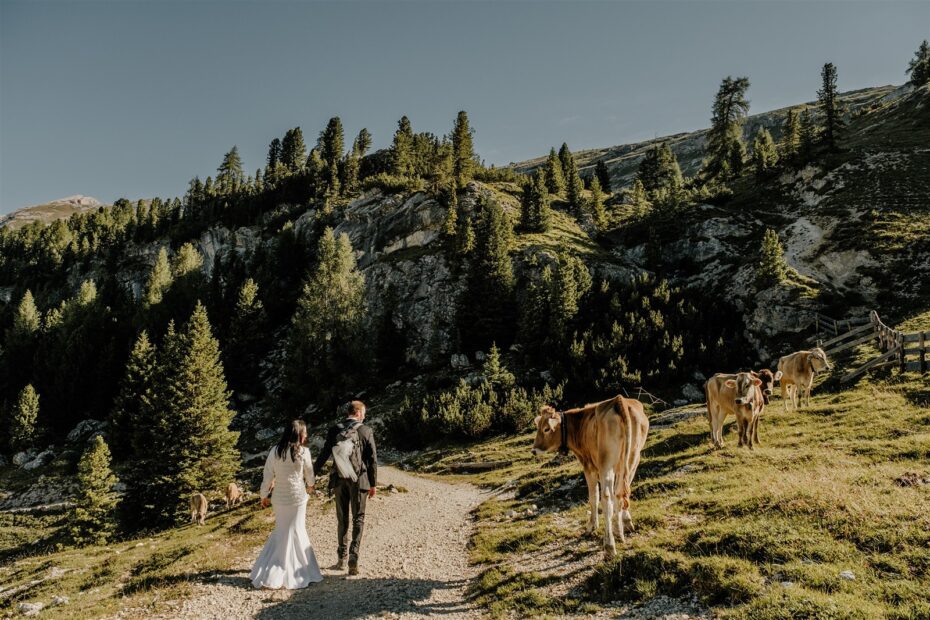
Respect Fences, Close Gates & Stay on the Path
When crossing alpine pastures, stay on the path. However, if you find cows on the path (which is very common), it’s best to go off the path and go around them, leaving as much space as possible.
Hiking with Dogs Around Cows
Cows can see dogs as a threat, and can become defensive. If you are hiking with dogs, keep them on a short leash. If you think you may be attacked, let go of the leash immediately.
Take Photos Safely
Capturing moments with grazing cattle can make for extraordinary elopement photos. However, ensure you photograph them from a safe distance, without approaching too closely. Remember, their safety and well-being come first.
Practice Leave No Trace
As you immerse yourself in the natural beauty of the Alps and Dolomites, practice Leave No Trace principles. Pack out all your trash, avoid disturbing the flora and fauna, and reduce your impact on the environment to preserve these exquisite landscapes for generations to come.
Respect
Respect the nature, animals and farmers, and follow all local regulations.
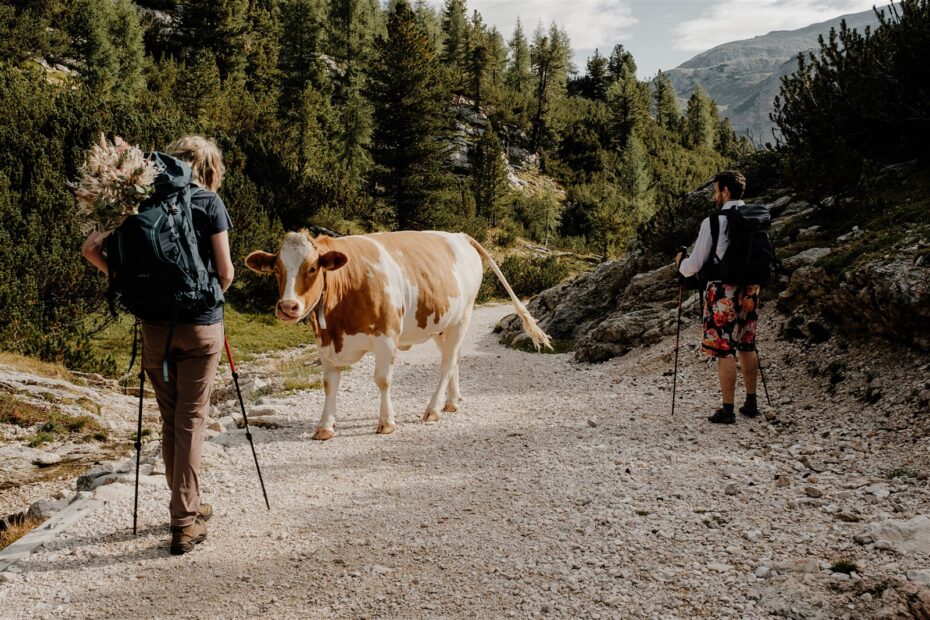
Why Is Following These Rules Important?
Following these guidelines while hiking through alpine pastures in the Alps and the Dolomites can avoid some of the following undesirable situations:
- Aggressive Behavior: Approaching grazing cattle too closely can lead to defensive behavior. Cows may perceive you as a potential threat to their calves or their own safety, and this can result in aggressive actions, such as charging or kicking.
- Injury to Humans: If you get too close to grazing cattle or startle them, you may inadvertently put yourself at risk of injury. Cattle are large animals with significant weight and strength, and even unintentional collisions can cause harm. Cows have injured and even killed hikers in the past. When a cow injures a human, the cow will be euthanised.
- Injury to Cattle: A lack of caution and respect for cattle’s space can lead to injuries among the animals. This is particularly concerning for mother cows protecting their calves.
- Escalating Stress: If hikers consistently approach grazing cattle without giving them space, it can lead to chronic stress among the animals. This stress may impact their overall well-being and affect their grazing behavior and reproductive success.
- Disturbing the Ecosystem: Disrupting grazing cattle in their natural habitat can lead to ecological imbalances. Cattle play a crucial role in maintaining the biodiversity of the alpine pastures, and disturbances can affect plant growth and seed dispersal.
- Environmental Impact: Not following Leave No Trace principles can lead to littering and degradation of the environment. This includes leaving trash behind or disturbing sensitive plant and animal habitats.
- Tension with Local Farmers: Hikers who do not respect local regulations or guidelines for hiking around grazing cattle may create tension with the farmers who rely on these practices for their livelihood.
- Trail Closures: Repeated incidents of unsafe encounters with grazing cattle can lead to temporary or even permanent trail closures in certain areas to protect both hikers and the animals.
To ensure a positive and safe experience for everyone involved, it is crucial to be responsible, knowledgeable, and respectful while hiking in areas with grazing cattle. By following these guidelines and best practices, you can enjoy the beauty of these alpine pastures while coexisting harmoniously with the gentle giants that roam them.

